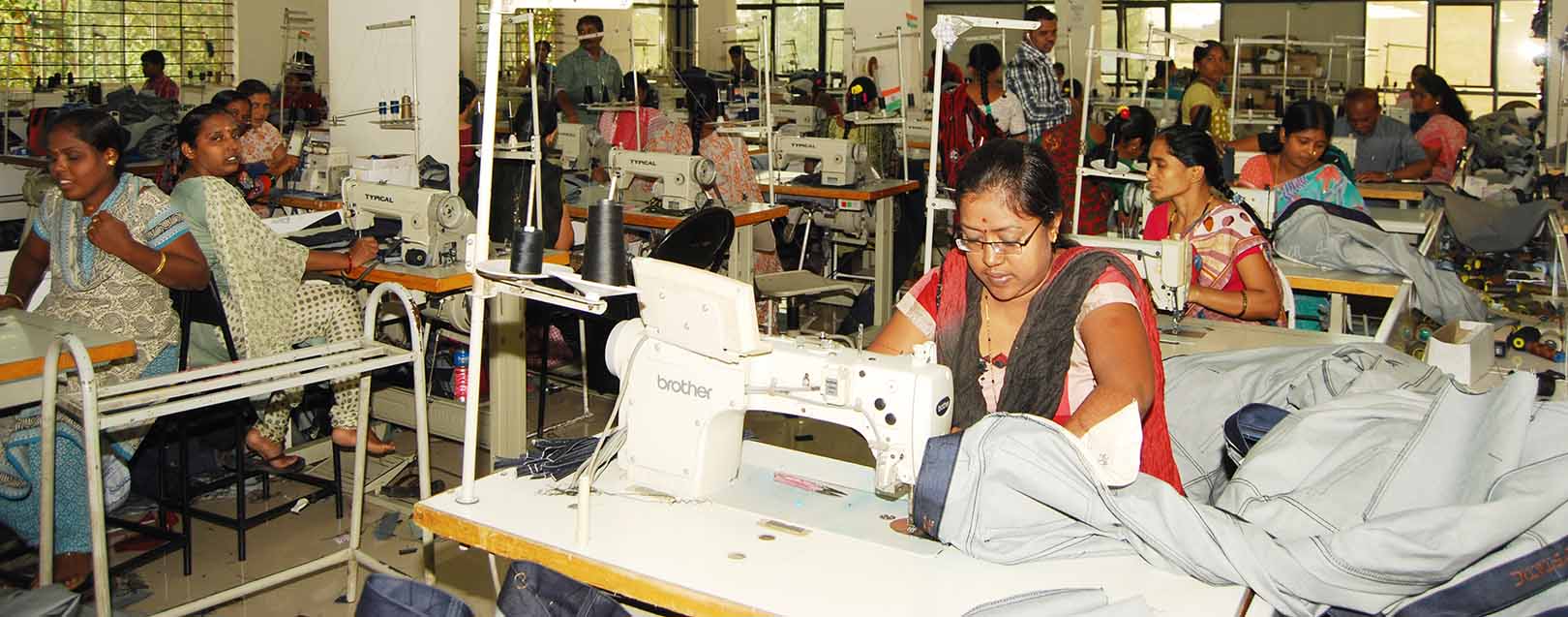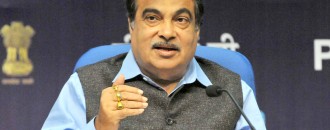
Forget Make In India. Start Exporting Oil!
Steven Philip Warner | The Dollar Business
How convenient would that be! History is proof that there are only two ways to a nation winning the “High Income” and “Developed” dual crowns. Either it makes a kill of a dig or scores a mind-over-machines victory. The former of course isn’t what India was or will ever be destined for (plain geography, divine mischief – call it anything). So we’re left with one choice – get the machines in line and make them sweat!
That’s precisely the vision behind ‘Make in India’. The original idea behind this dream was no Chinese arithmetic. Agriculture cannot support a growingly industrialising India. And Services will not suit the less educated who desire a salaried or entrepreneurial leap from the fields to white collared profiles. So manufacturing becomes the only bridge between the yesterday and tomorrow, and more concretely put, to make India’s GNI per capita appear more respectful. And that, in itself becomes a Herculean task for a Head of State who has to run the country from somewhere in the middle of the map, with more than 1,300,000,000 lives looking at him for inspiration, and breathing in a macroeconomic machinery that’s on the blink (indicators, be it widespread poverty, ever-growing trade deficit, or even a currency in doldrums).
Then, along comes young Simba, the would be Lion King. He is apparently strong and metallically muscular, made of parts gathered and pieced together after a brisk bout between two big clocks [maybe, robots] and promising India the change that will inspire even an individual who thinks like America and works like China! We are talking of an Indianised version of the Industrial Revolution that made England. Too big to imagine? But that’s where the strength of ‘Make in India’ lies. And that dream, may well be India’s tomorrow. [I said, may.]
Unfortunately, at present the dimension of the dream that reaches into space is the only strength in the campaign that we’ve been able to imagine thus far. The rest of this manufacturing fairytale-in-the-making is a case of question marks. In this issue of The Dollar Business, we have explored some sectors that are critical to making the lion roar. It’s been a year since the campaign was announced and nothing much seems to have moved – just an inch here, just an inch there.
As far as initiatives go, Make in India is still largely isolated to media announcements and MoUs and commitments on paper. Multinationals like Samsung, Siemens, Hitachi, Foxconn, Gionee, PepsiCo, General Electric, and the likes have made public their multi-million dollar intentions to manufacture in the country, and some other like Huawei, Lenovo, Xiaomi have actually begun production at various plants across the nation. That is good news. But pray tell – with global economy nowhere near it pre-2008 state, with Chinese and European economies battered significantly in some form or the other, and with costs being an even bigger issue today with First World manufacturing spots, weren’t India, Vietnam and Philippines meant to be natural choices to set up plants? India being sparingly (not “unanimously”, mind you) chosen as a manufacturing destination by multinationals is just an outcome of global economic turbulence! [What has ‘Make in India’ got to do with that?]
There is a more important question to be asked here. But what has been the effort to integrate the MSMEs into the larger picture – a camp that employs close to 40% of India’s workforce and accounts for 45% of the country’s manufacturing output, with expectations that its share in India’s merchandise exports will rise from the current 40% to 50% by FY2017. As a rough estimate, MSMEs account for almost 8000 of the 11500-odd (at the eight-digit HS Code level) product lines exported by India. That’s significant! In fact, the importance of this segment is so apparent that even an outside entity like The World Bank approved a financing of half-a-billion to MSMEs in India in March.
Our PM knows this. In the second week of September, he met 27 high-profile individuals (industrialists, CEOs, economists, policymakers – everyone from India’s richest man to the RBI Governor) at 7 Race Course Road in the capital city. He expressed his thoughts in brief. The two main issues he put forward were – employment generation from MSMEs and skill development. He didn’t speak of Make in India. Yet he did. Employment generation by MSMEs resulting in enhancing India’s manufacturing prowess – that was Make in India right there!
So how has Make in India been for this manufacturing group that accounts for more than 80% of total industrial enterprise in the country? In my conversations with representatives of India Inc. and analysts who study every development with utter keenness, the fact that makes me believe more in the slow pace of affairs is that this cluster of India’s manufacturing community is still largely untouched by this dream.
Today, we talk of getting India ready in terms of making engines and avionics of commercial and defence aircraft. Until we reach a point in time when fully indigenised airplanes fly out of our hangars, Make in India will not have been achieved! Forget auto components, we need entire ‘Made in India’ cars being shipped. Import raw materials if required, not engines. [This is in particular reference to the fact that even an automaker like Maruti Suzuki, considered largely Indian for some reason, uses imported engines. The most recently launched S-Cross uses Fiat engines imported from Italy!] Another thought that comes to mind here is that in order to beat the best of nations in the business of manufacturing, without a serious focus on manufacturing – especially export manufacturing – the lion’s influence will only be limited to the boundaries of a nation that still largely suffers from a lack of infrastructure. Be it shortage of land or capital, delays in the roll-out of a uniform corporate tax regime, absence of government support to MSME units – all these roadblocks will play role in deciding how many years beyond 2020 will it take before India’s manufacturing dream comes true. We can’t afford potholes. If $900 billion is the exports goal set for 2020, we don’t have much time left on our watches.
Perhaps, we can do what Vietnam does to encourage mobile manufacturing (a 30-year tax holiday, because that’s how long MSMEs need before a country starts expecting taxes from them). The day Make in India makes a difference in the lives of Coir exporters of Kerala, bamboo exporters of Mizoram, textile exporters of Maharashtra, jute exporters of Kolkata, ceramic exporters of Gujarat, brass and leather exporters of Uttar Pradesh, silk exporters of Karnataka, tea exporters of North Bengal and Assam, processed food exporters of Arunachal, and many such lesser known agents of foreign trade who will play a vital role in the Make in India dream coming true, little can be imagined about this novel, royal dream.
 Without adequate capital and knowledge support to SMEs, it’s difficult to imagine hearing the roar of the metal lion!
Without adequate capital and knowledge support to SMEs, it’s difficult to imagine hearing the roar of the metal lion!Just one thought – many speak about how companies are coming forward to make Make in India a success. One like Airbus, which assured a couple of months back that its outsourcing to India will increase 400% to $2 billion by 2020, as part of the Make in India initiative. Should we be happy about supplying four times more number of doors for the A320s? And yes, Airbus does talk about its tie-ups with companies like Infosys, HCL, Geometric, Dynamatic Technologies, Spirit Aero Systems, Tech Mahindra, Quest, Hindustan Aeronautics Limited, besides others – but these are either originally non-Indian firms or if Indian are nowhere MSMEs (as per the Ministry of MSME in India, the maximum investment in plant and machinery that defines the largest of the entity in the MSME group, i.e. a Medium enterprise, is Rs.10 crore)! [People don’t use the phrase “grass-roots level” for nothing, especially when they want to elaborate on a fundamental cause.]
There is more to do for India’s think tanks than just worry over the Fed raising rates [which will lead to the dollar appreciating and is therefore any day a good news for Indian exporters], hot money that may be involved in capital flight if that happens [practically, yes there’s the fear that the Fed rate hike means margin calls for FIIs, who would have invested near zero-interest borrowed dollars to invest in an emerging (“risky”) market like India, but the monies that have already flowed out since August (after the Yuan and Chinese stock market scares) mean that only a minor portion of the hot money remains any longer in India], crude oil price falling (for India, that’s nothing but good news!), commodity prices being at an all time low [again, which has offset the depreciation in rupee and brought down costs for Indian manufacturers]. It’s time we realise the importance of uniform, liberal, and “untinkered” manufacturing and foreign trade policies, and understand that there is a large section of India’s manufacturing community which feeds the lion that we imagine India’s manufacturing industry to be.
The day this community’s life is overwhelmingly touched by the ‘Make in India’ campaign and it stops claiming that “progress and output growth would have happened anyway”, is the day we would have moved one step closer to seeing Simba grow. They need capital, land and machines... lunch menus with bowlfuls of motivation, platefuls of promises and dips of vision won’t do.
Until then, let’s just hope an earthquake [since we’ve seen a lot lately] gives us a mighty clue of one unexplored oil well somewhere. Well, that’s one shortcut to becoming a developed economy.






 to success.
to success.